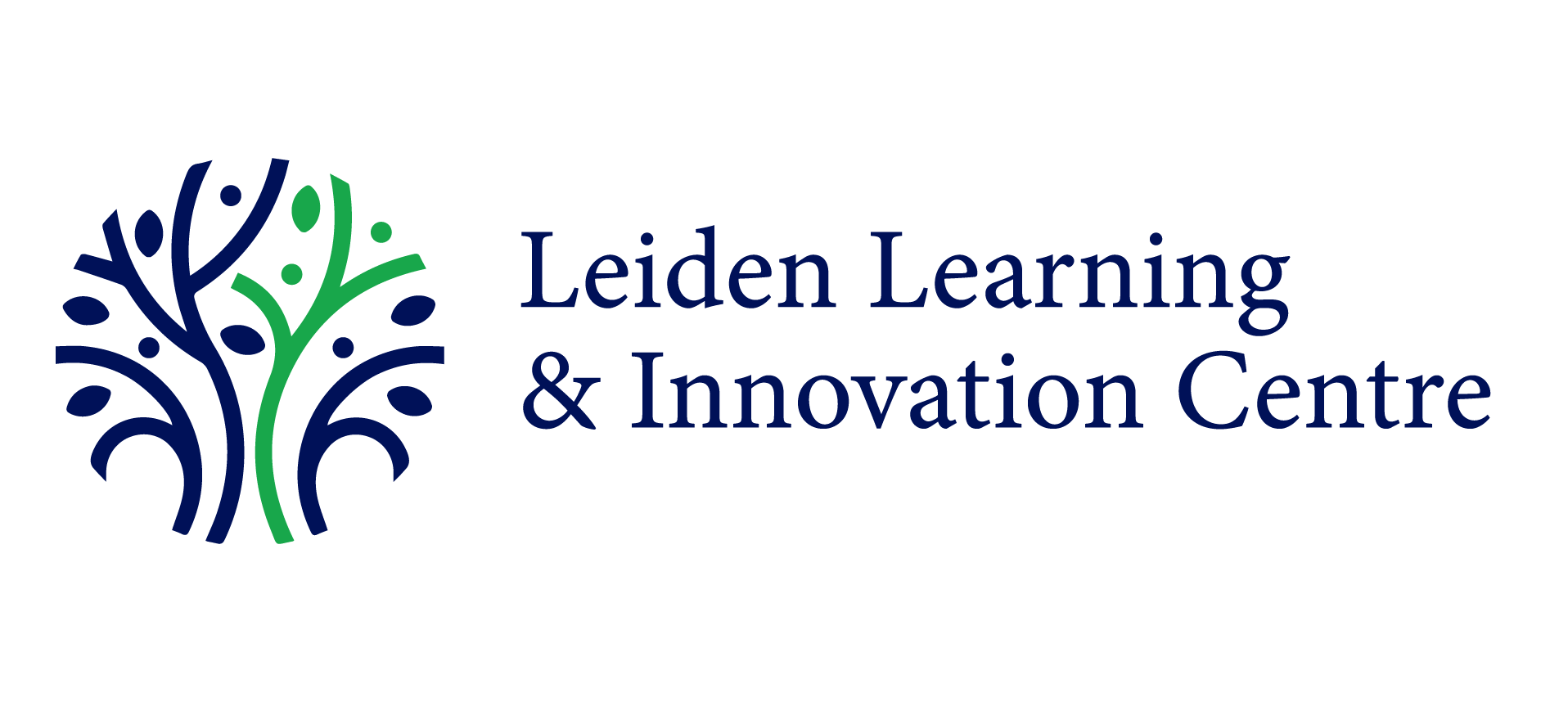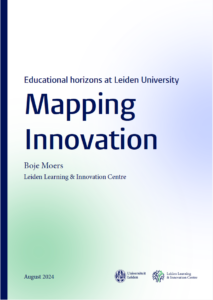Educational Horizons at Leiden University: Mapping Innovation
Over the past year, I conducted a research project which delved into the landscape of educational innovation within Leiden University. If you’re curious to know more, feel welcome read more about the key insights in my article below.
Within the contexts of growing international competition and the rise of (online) education providers, Leiden University must continuously redefine its distinctive value in order to stay relevant in an ever-changing higher education landscape. With increasing digitalisation as well as the evolving nature of education, the university faces the challenge of adapting its programs to meet the demands of a digital generation, enhance learning experiences, and teach relevant skills. While enthusiastic lecturers have initiated projects aimed at enhancing teaching and learning, the overall coherence and integration of these activities within the institution is impacted by the lack of a university-wide vision able to pool information and brings various initiatives together.
The research project I conducted focuses on Leiden University’s architecture for supporting educational innovation, emphasising opportunities for lecturers to engage with the topic and the barriers that prevent effective expansion and integration of innovative initiatives. This blog article addresses the most important findings.
Grants
Monetary resources are imperative in the context of educational innovation since they provide the space for experimentation and renewal while also rewarding excellence in teaching. Grants are not merely financial aids. They represent a commitment to cultivating a culture of innovation, encouraging lecturers to explore and implement novel ideas in teaching and learning. A variety of grants, both internal and external, exist.
The university’s funds (e.g. from LTA, Grassfields) are intended to support projects that complement the institution’s objectives. External grants (Comenius, Dutch Education Award, Erasmus+ Cooperation Partnerships) come from sources such as governmental organisations. Because of this funding, universities and lecturers can realise large-scale projects in education with greater resources and opportunities for collaboration.
Faculty-specific grants (Grassroots/Grass Shoots, Innovation Fund Humanities) play an integral role in supporting small-scale educational innovation. These grants provide funding for smaller projects which improve teaching and learning within a particular course or discipline. Unlike most central or external grants, faculty grants often focus on practical improvements able to be put into practice more rapidly. They encourage lecturers to, for example, experiment with (new) pedagogical approaches or integrate (emerging) technologies into the classroom. Moreover, they allow lecturers to improve incrementally without having to do something completely different. For these reasons, faculty grants contribute to the development of an innovative and progressive culture in the departments.
Key enablers for educational innovation to thrive
Initially, I was stuck on the idea that educational innovation is primarily driven by funding. However, conversations with stakeholders revealed that innovation can also be achieved through other means. Various enablers within Leiden University’s faculties help realise educational innovation or add value by providing inspiration and establishing structures for knowledge sharing within the academic community.
One such enabler is a supportive infrastructure. In this, the Teacher Support Desks (TSDs) play an integral role. TSDs aid lecturers in developing and implementing (innovative) teaching practices, offering both didactical and technological support. This helps lecturers stay up to date with pedagogical advancements and further refine their teaching.
Secondly, outreach and engagement initiatives such as educational festivals, symposia, and lunch bytes sustain the university’s innovative ecosystem. These events empower lecturers to explore new approaches and trends in their field. Moreover, they encourage experimentation by showcasing what colleagues have recently tried out or implemented in their teaching. Many of these initiatives are low-threshold activities, easily accessible to lecturers seeking inspiration or new learning opportunities.
Thirdly, knowledge sharing is also facilitated through digital platforms including Teacher platforms or MS Teams environments. These platforms serve as virtual spaces where support staff can inform lecturers about teaching and learning, and educators can exchange ideas and best practices.
Lastly, unique access opportunities such as active learning spaces or studios for recording podcasts and knowledge clips enable lecturers to explore creative teaching methods which enhance student engagement and learning outcomes.
These enablers demonstrate that contributing to educational innovation is not solely dependent on grant structures. By providing low-threshold opportunities for engagement and inspiration, faculties can create an environment where new ideas are generated and innovation is naturally integrated into teaching practices.
Improving Leiden University’s ecosystem of educational innovation
Note: this section is described in much greater detail in the report, also drawing on academic literature.
In the final section of my research project, I explored what institutional elements can be further developed so that the ecosystem of educational innovation might work in a more integrated, effective, and efficient manner. Conversations with stakeholders revealed many topics in need of attention which I addressed in two overarching categories: ‘Infrastructure and Support’ and ‘Policy and Governance’.
Infrastructure and Support focuses on integrating systems to connect innovation across the university. Leiden University’s decentralised structure creates ‘islands of innovation’ which influence connectivity potential. Strengthening connections between departments, such as linking TSDs with each other as well as with central departments, potentially enhances collaboration and knowledge sharing. Establishing a central knowledge partner to oversee these connections would be a vital addition. Increasing the visibility of successful practices can furthermore inspire staff and contribute to an innovative environment.
Improving infrastructure offers benefits such as enhanced knowledge sharing, better collaboration, and meeting faculty needs more effectively. By connecting innovation, successful initiatives not only benefit isolated faculties but the entire university.
Policy and Governance refers to addressing issues around scalability, workload, and contractual issues. Firstly, clear policies for scaling successful innovations are necessary to avoid the discontinuation of promising initiatives. The current steps taken in this process are promising and include, for example, the implementation of Grassfields. Secondly, heavy workload can hinder lecturers’ engagement with educational innovation. Addressing workload by allocating time for professional development, for example, is vital in the process of innovating. Finally, the reliance on temporary contracts for certain cohorts of lecturers raises concerns about staff commitment to strategy and long-term professional and course development. Paying attention to these issues is critical in order to break down the barriers that can cause innovation to struggle.
Conclusion
My research project shed light on the landscape of educational innovation at Leiden University, revealing both opportunities and areas that need attention. While grants and key enablers support educational innovation, challenges lie in connecting innovation, enhancing knowledge dissemination, and ensuring that university strategies align with the daily activities of lecturers.
A perspective that is left out but is equally important is that of lecturers themselves: how do they perceive the current state of educational innovation in the university, how do they relate to it, and what insights regarding the (dis)alignment between university strategies and their daily work activities would be revealed? Even though this project has illuminated several aspects of educational innovation within Leiden University, further exploration, particularly of lecturers’ perspectives, is necessary for a more thorough comprehension and meaningful progress.


